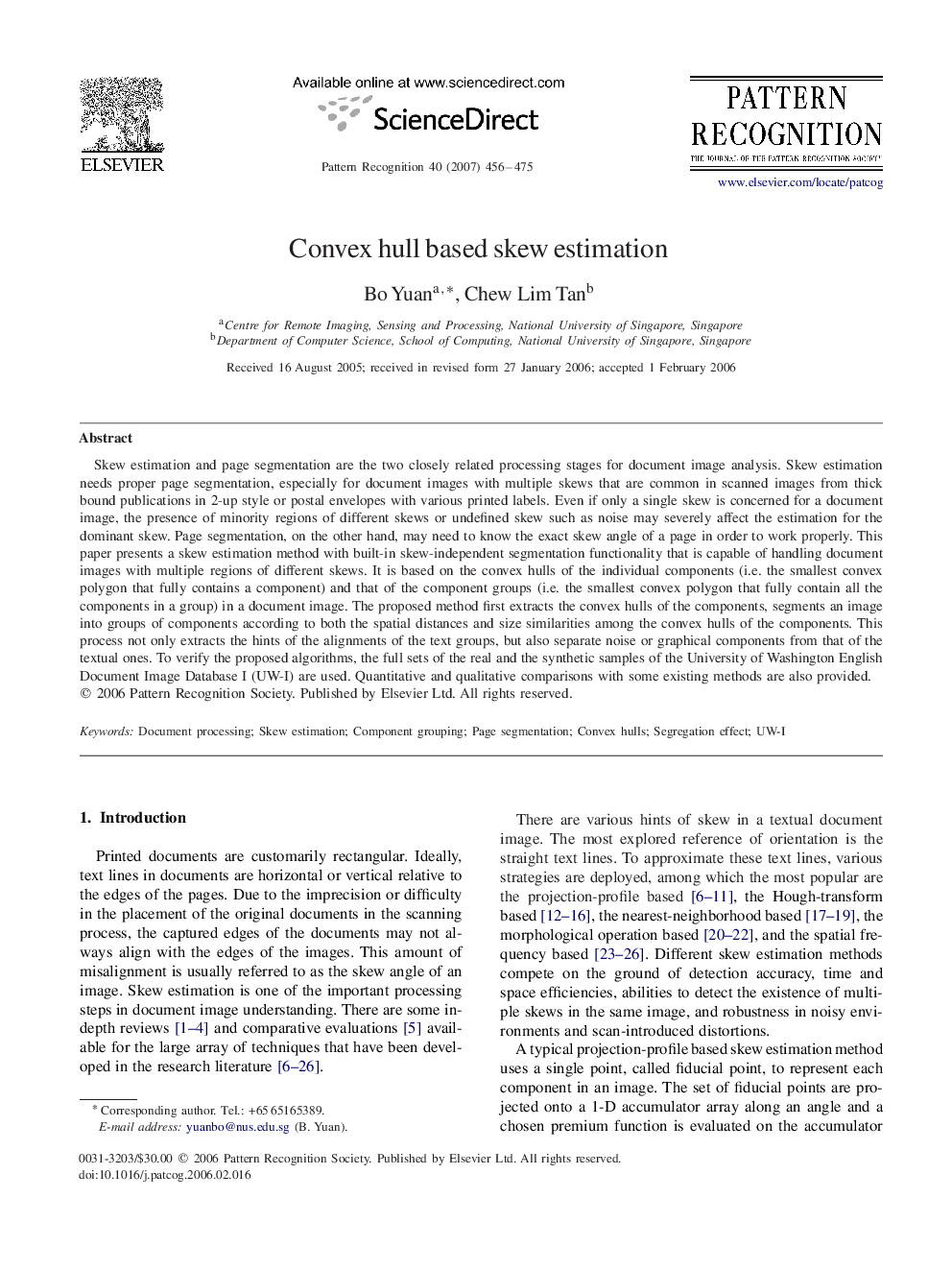| Article ID | Journal | Published Year | Pages | File Type |
|---|---|---|---|---|
| 531637 | Pattern Recognition | 2007 | 20 Pages |
Skew estimation and page segmentation are the two closely related processing stages for document image analysis. Skew estimation needs proper page segmentation, especially for document images with multiple skews that are common in scanned images from thick bound publications in 2-up style or postal envelopes with various printed labels. Even if only a single skew is concerned for a document image, the presence of minority regions of different skews or undefined skew such as noise may severely affect the estimation for the dominant skew. Page segmentation, on the other hand, may need to know the exact skew angle of a page in order to work properly. This paper presents a skew estimation method with built-in skew-independent segmentation functionality that is capable of handling document images with multiple regions of different skews. It is based on the convex hulls of the individual components (i.e. the smallest convex polygon that fully contains a component) and that of the component groups (i.e. the smallest convex polygon that fully contain all the components in a group) in a document image. The proposed method first extracts the convex hulls of the components, segments an image into groups of components according to both the spatial distances and size similarities among the convex hulls of the components. This process not only extracts the hints of the alignments of the text groups, but also separate noise or graphical components from that of the textual ones. To verify the proposed algorithms, the full sets of the real and the synthetic samples of the University of Washington English Document Image Database I (UW-I) are used. Quantitative and qualitative comparisons with some existing methods are also provided.
